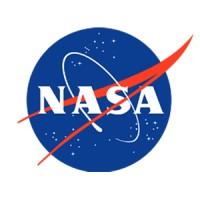Bridging the Cosmos: NASA and Roscosmos Collaborate in Space
September 16, 2024, 11:10 pm

Location: United States, Maryland, Greenbelt
Employees: 10001+
Founded date: 1958
Total raised: $25.7B
In the vast expanse of space, cooperation shines brighter than the stars. Recent events highlight the ongoing partnership between NASA and Roscosmos, two titans of space exploration. Their collaboration is not just a matter of shared technology; it’s a testament to human ingenuity and resilience.
On September 11, 2024, the Soyuz MS-26 spacecraft lifted off from the Baikonur Cosmodrome in Kazakhstan. Inside were three astronauts: NASA’s Don Pettit and Russian cosmonauts Alexey Ovchinin and Ivan Vagner. This mission marked another chapter in the storied history of international space travel. As the spacecraft soared into the cosmos, it carried with it the hopes of many.
The Soyuz MS-26 docked seamlessly with the International Space Station (ISS). This docking was not just a technical achievement; it symbolized unity. In a world often divided, space remains a realm where collaboration thrives. The astronauts aboard the ISS represent a blend of cultures and expertise, working together for a common goal: the advancement of science.
Meanwhile, the Boeing Starliner mission has faced its own set of challenges. NASA astronauts Sunita Williams and Butch Wilmore recently shared their experiences aboard the ISS. Their mission was initially intended to last a week, but complications with the Starliner’s engines extended their stay to three months. Despite the hurdles, both astronauts expressed no blame towards Boeing. They recognized the complexities of space travel. It’s a dance with danger, where every step must be calculated.
Williams is set to become the commander of the ISS, a role she embraces with enthusiasm. She views the transition from Starliner to the ISS as a unique opportunity. The chance to operate on different spacecraft adds layers to their experience. It’s akin to a musician mastering multiple instruments, each offering a distinct sound.
The ISS currently hosts a diverse crew of 12 astronauts, with seven from NASA and five from Roscosmos. This mix of nationalities fosters a rich environment for collaboration. Each astronaut brings unique skills and perspectives, enhancing the mission’s overall effectiveness. The camaraderie among them is palpable, a reminder that in space, borders blur.
Despite the challenges faced by the Starliner, the astronauts aboard the ISS remain undeterred. They find joy in their work, even in the weightlessness of space. Williams noted that every day presents a new perspective. The cosmos is a playground for the mind, where creativity flourishes. The tasks may be daunting, but the rewards are immense.
The decision to keep Williams and Wilmore aboard the ISS longer than planned was not taken lightly. NASA assessed the risks associated with sending them back on the Starliner. Safety is paramount in space travel. The agency concluded that returning them home via the Starliner was too risky. Instead, they opted for a safer route, allowing the astronauts to continue their vital work on the ISS.
As the Crew-9 mission approaches, the anticipation builds. Scheduled for launch at the end of September, it promises to bring new faces to the ISS. The return of Williams and Wilmore to Earth is expected in February 2025. Their journey home will mark the end of a significant chapter but also the beginning of new adventures.
The partnership between NASA and Roscosmos is a beacon of hope. It demonstrates that when nations unite for a common purpose, extraordinary things can happen. The ISS serves as a laboratory for scientific discovery, where experiments can lead to breakthroughs in medicine, technology, and our understanding of the universe.
In the grand tapestry of space exploration, each mission weaves a story of perseverance. The astronauts are the threads, each contributing to a larger narrative. They face the unknown with courage, pushing the boundaries of what is possible. Their work is not just about reaching new heights; it’s about inspiring future generations.
As we look to the stars, we must remember the importance of collaboration. The challenges of space are immense, but together, we can overcome them. The ISS stands as a testament to what can be achieved when we work hand in hand. It is a symbol of hope, a reminder that humanity can rise above its differences.
In conclusion, the journey of space exploration is far from over. With each launch, we take another step into the unknown. The partnership between NASA and Roscosmos is a shining example of what can be accomplished through unity. As we continue to explore the cosmos, let us carry forward the spirit of collaboration. The universe awaits, and together, we can unlock its secrets.
On September 11, 2024, the Soyuz MS-26 spacecraft lifted off from the Baikonur Cosmodrome in Kazakhstan. Inside were three astronauts: NASA’s Don Pettit and Russian cosmonauts Alexey Ovchinin and Ivan Vagner. This mission marked another chapter in the storied history of international space travel. As the spacecraft soared into the cosmos, it carried with it the hopes of many.
The Soyuz MS-26 docked seamlessly with the International Space Station (ISS). This docking was not just a technical achievement; it symbolized unity. In a world often divided, space remains a realm where collaboration thrives. The astronauts aboard the ISS represent a blend of cultures and expertise, working together for a common goal: the advancement of science.
Meanwhile, the Boeing Starliner mission has faced its own set of challenges. NASA astronauts Sunita Williams and Butch Wilmore recently shared their experiences aboard the ISS. Their mission was initially intended to last a week, but complications with the Starliner’s engines extended their stay to three months. Despite the hurdles, both astronauts expressed no blame towards Boeing. They recognized the complexities of space travel. It’s a dance with danger, where every step must be calculated.
Williams is set to become the commander of the ISS, a role she embraces with enthusiasm. She views the transition from Starliner to the ISS as a unique opportunity. The chance to operate on different spacecraft adds layers to their experience. It’s akin to a musician mastering multiple instruments, each offering a distinct sound.
The ISS currently hosts a diverse crew of 12 astronauts, with seven from NASA and five from Roscosmos. This mix of nationalities fosters a rich environment for collaboration. Each astronaut brings unique skills and perspectives, enhancing the mission’s overall effectiveness. The camaraderie among them is palpable, a reminder that in space, borders blur.
Despite the challenges faced by the Starliner, the astronauts aboard the ISS remain undeterred. They find joy in their work, even in the weightlessness of space. Williams noted that every day presents a new perspective. The cosmos is a playground for the mind, where creativity flourishes. The tasks may be daunting, but the rewards are immense.
The decision to keep Williams and Wilmore aboard the ISS longer than planned was not taken lightly. NASA assessed the risks associated with sending them back on the Starliner. Safety is paramount in space travel. The agency concluded that returning them home via the Starliner was too risky. Instead, they opted for a safer route, allowing the astronauts to continue their vital work on the ISS.
As the Crew-9 mission approaches, the anticipation builds. Scheduled for launch at the end of September, it promises to bring new faces to the ISS. The return of Williams and Wilmore to Earth is expected in February 2025. Their journey home will mark the end of a significant chapter but also the beginning of new adventures.
The partnership between NASA and Roscosmos is a beacon of hope. It demonstrates that when nations unite for a common purpose, extraordinary things can happen. The ISS serves as a laboratory for scientific discovery, where experiments can lead to breakthroughs in medicine, technology, and our understanding of the universe.
In the grand tapestry of space exploration, each mission weaves a story of perseverance. The astronauts are the threads, each contributing to a larger narrative. They face the unknown with courage, pushing the boundaries of what is possible. Their work is not just about reaching new heights; it’s about inspiring future generations.
As we look to the stars, we must remember the importance of collaboration. The challenges of space are immense, but together, we can overcome them. The ISS stands as a testament to what can be achieved when we work hand in hand. It is a symbol of hope, a reminder that humanity can rise above its differences.
In conclusion, the journey of space exploration is far from over. With each launch, we take another step into the unknown. The partnership between NASA and Roscosmos is a shining example of what can be accomplished through unity. As we continue to explore the cosmos, let us carry forward the spirit of collaboration. The universe awaits, and together, we can unlock its secrets.
